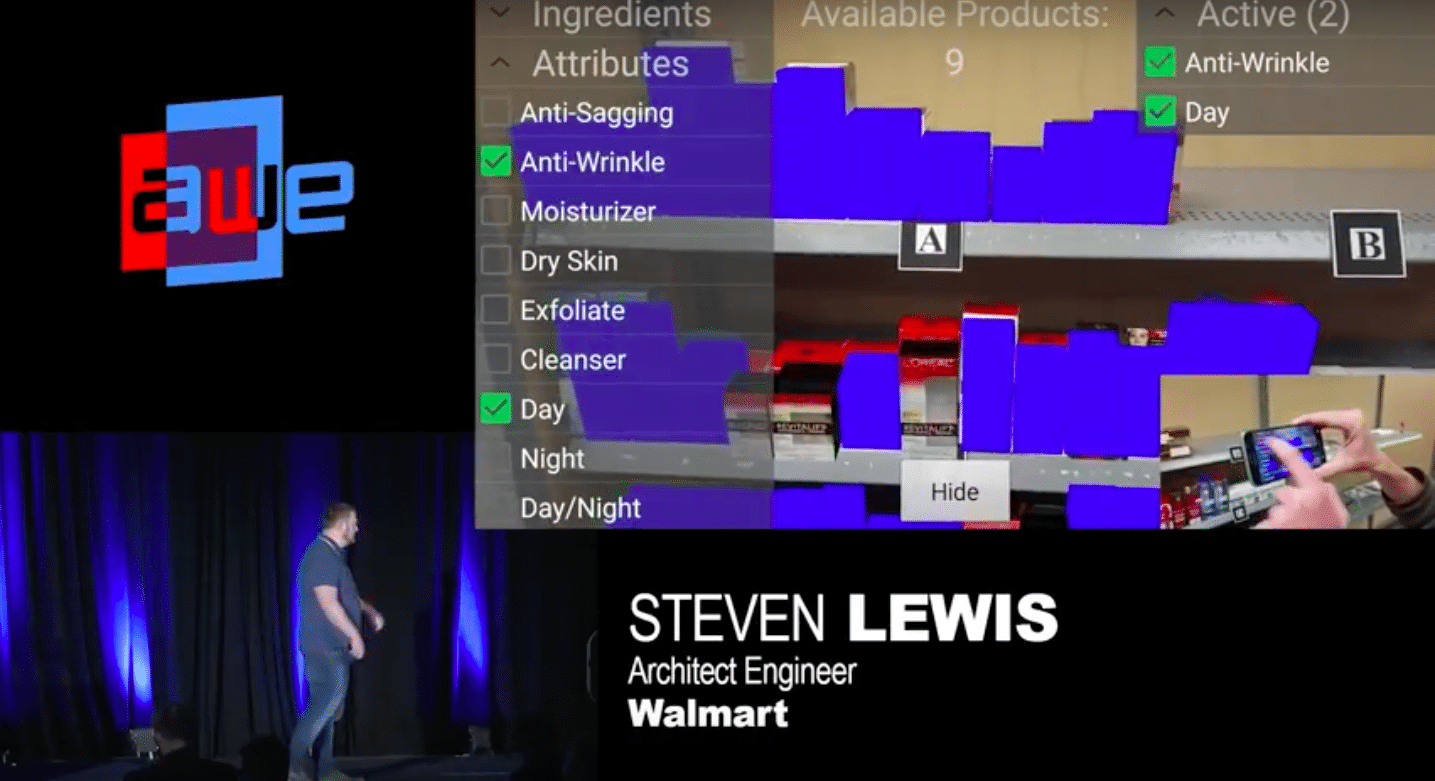
Among the areas that AR transform, shopping could have the most economic impact. It’s is already making its mark in e-commerce through product visualization like IKEA and BMW. But could it do even more in offline shopping?
As we’ve examined e-commerce represents a small share of retail spending. Of the $3.7 trillion spent in the U.S., about $3.4 trillion is in physical stores. But it’s important to note that online and mobile media increasingly drive and influence that offline spending, to the tune of about $2 trillion.
That’s where AR comes in. It’s well-suited for qualifying physical goods through informational overlays. Holding up a phone is more intuitive than typing words into Google or Amazon in a store aisle. And camera affinity is strong among increasingly buying-empowered millennials and Gen Z.
This is further supported by ARtillry Intelligence consumer survey data that shows shopping as a desired type of AR app. Taking away the outlier that is games (read: Pokemon Go), one of the most demanded use cases among AR users is getting in-aisle product info and navigation.

Best of Both Worlds
The best way to think about AR’s utility in retail is fusing the best of e-commerce and in-store experiences. The reasons offline shopping dominates include immediate gratification and the need to see/touch products — especially big-ticket items like TVs, cars and couches.
But what about the advantages of e-commerce? There’s more supply, transparency, cost efficiency, inventory (a.k.a “endless aisle”) and ability to dynamically search and filter product attributes. But AR can engender a sort of hybrid UX that brings these features to store aisles.
One example is Walmart, which built an AR prototype app to assist in-aisle product engagement. When pointed at a shelf of cosmetic products — a sku-intensive category — it filters attributes like price and color, just like an e-commerce UX. It then highlights items that match the filter criteria.
“When I say ‘physical to digital’ I mean it literally: smash them together, “said Walmart’s Steven Lewis in reference to the app, on stage at AWE in June. “You choose filter criteria and it narrows down and filters out what you don’t want to see. That’s kind of like an e-commerce experience.”

The Last Mile
Since Lewis’ AWE comments, Walmart launched its AR Scanner app feature, which lets users point phones at products in the store ( video below). Just like visual search, a close cousin of AR, this dynamically invokes informational overlays such as product details, pricing and reviews.
But beyond the benefits to users — which of course drives repeat business and ARPU metrics for retailers — there are direct retailer benefits. For example, the AR in-aisle engagement uncovers shopping data that informs everything from inventory management to optimal store layouts.
“There’s lots of analytics you can get as a retailer or brand when you actually have someone with a mobile device, or headset in the future, looking at your products,” said Lewis. “Retailers today try to guess your dwell time… there could be a whole lot of [AR] analytics that would be helpful.”
For example, one of the benefits and drivers for Google’s VPS is to report/attribute in-store sales to advertisers to validate their ROI. This last mile to the cash register has always been a gray area in ad effectiveness despite the fact that it, again, is where most spending happens.
Don’t Fight It
AR in retail will also be the latest evolution in showrooming — using the mobile device’s connectivity and portability to inform in-store purchases (or order online). And just like showrooming over the past decade, the losers in retail’s next era will be those that try to fight it.
We’re currently seeing lots of examples of this “adapt or die” principle with retailers embracing digital disruption. There’s a growing divergence in the retail sector where digital converts are thriving and exceeding quarterly revenue targets, while non-adaptive companies are dying.
The former include companies like Target and Walmart that are innovating with in-store digital shopping tools, mobile payments and order/pick-up features. The latter include companies like Toys ‘R Us and Circuit City that failed to embrace mobile tech and millennial proclivities.
The next step in that trend will be AR and other flavors of in-store digitization — like our longstanding prediction for in-aisle payments that’s materializing with Amazon Go and others. Retailers will have to keep up if they’d like to control their own destinies. If not, someone else will.
Put another way, Amazon is reconciling e-commerce disadvantages with things like AR product visualization. So retailers that fail to likewise close the gap on the disadvantages of in-store shopping — with things like in-aisle AR — will lose the battle for shopping’s next era.
For deeper XR data and intelligence, join ARtillry PRO and subscribe to the free ARtillry Weekly newsletter.
Disclosure: ARtillry has no financial stake in the companies mentioned in this post, nor received payment for its production. Disclosure and ethics policy can be seen here.
Header image credit: Aisle411
